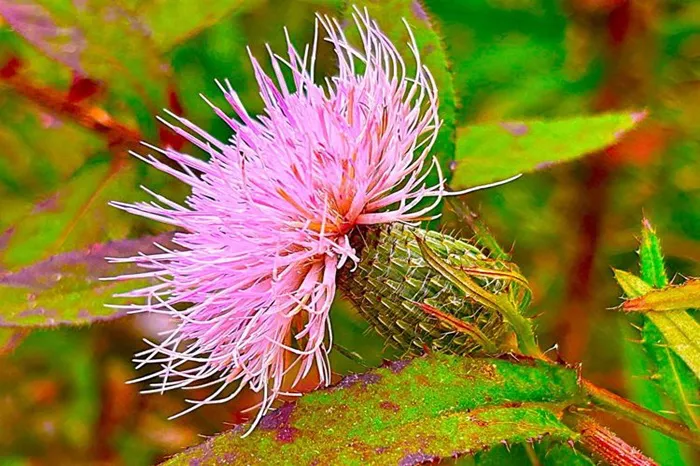Thistles are a fascinating group of plants that belong to the sunflower family, or Asteraceae, a large botanical group with over 20,000 species. Despite their prickly reputation, thistles hold an important place in nature.
Characteristics of Thistles
Thistles are distinguished by their slender, tubular flowers that cluster in large, tight heads. Unlike zinnias or daisies, which have flat, petal-like flowers, thistles lack these “ray” flowers. Their blooms are generally pollinated by insects, making them crucial for supporting pollinators such as butterflies and bees. The spiny foliage is another notable feature, often deterring humans and animals from close interaction.
Many species of thistle are also prized as ornamental garden plants. One of the most famous relatives is the globe artichoke, known for its edible flower buds. It’s important not to confuse this plant with the Jerusalem artichoke, which is entirely different.
Encountering the Mystery Thistle
Recently, I came across a patch of thistles during a field trip to upstate South Carolina. This particular thistle, though spiny, is one of several species found in North America. It grows widely, especially in areas like the edges of woods or along creeks. The plant is common throughout the eastern U.S. and the Midwest.
The tall stems of this thistle are smooth, and its leaves bear spines. The leaves are dark green on top, but the underside is covered in a dense layer of soft white hairs—one of the key features that help identify this plant. At the top of each stem, multiple flower heads emerge, each on a stalk several inches long. The bright pink flowers are quite striking, especially when they are in full bloom under the sun. This blooming period begins in late summer and extends into autumn.
Once the flowers mature, they produce one-seeded fruits with silky, plume-like bristles. These bristles allow the seeds to be carried away by the wind. Goldfinches, particularly the American goldfinch (Spinus tristis), are drawn to these seeds. Watching a flock of these vibrant yellow and black birds feast on the thistle seeds is a true delight for bird lovers.
Native Thistles in North America
There are many native thistle species across North America, including the one mentioned here. Although their spiny nature can make them difficult to handle, native thistles play a valuable role in natural ecosystems. Unfortunately, introduced thistle species have become invasive in some areas, causing problems for agriculture and native plant life.
Despite their reputation as troublesome plants, native thistles deserve appreciation for their contribution to the environment. In fact, they can even be considered as unique and beneficial additions to home gardens, especially for those looking to support pollinators and local wildlife.
Related topics:


